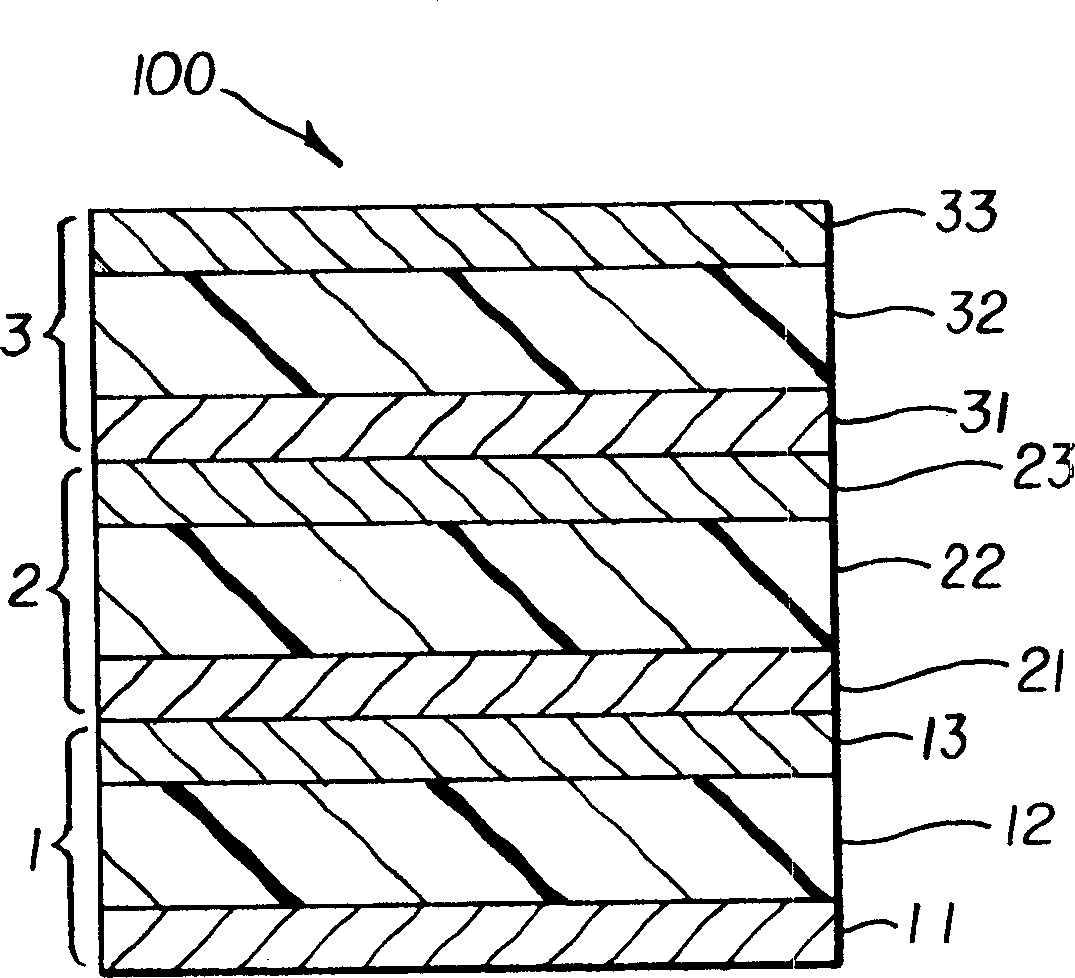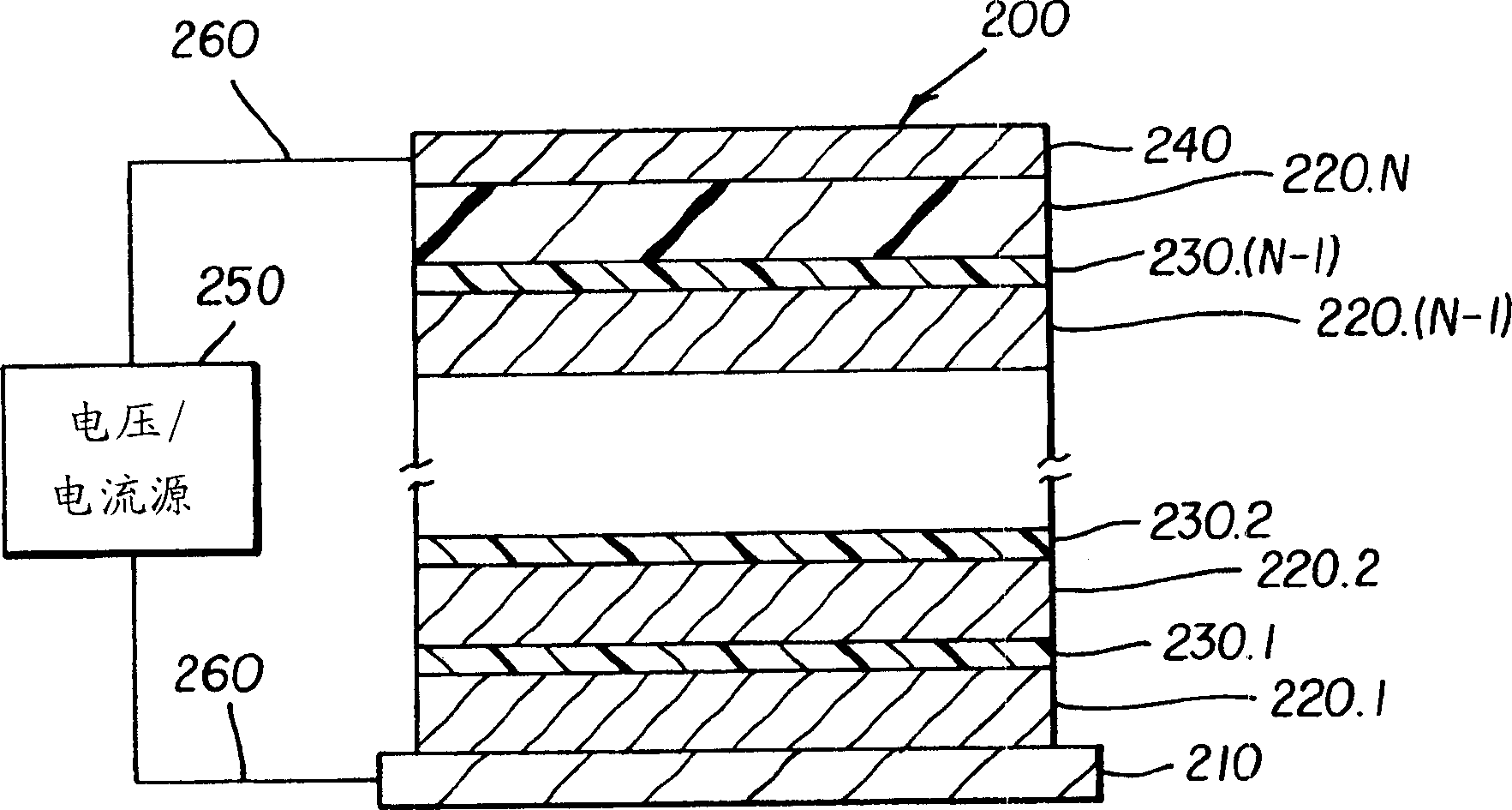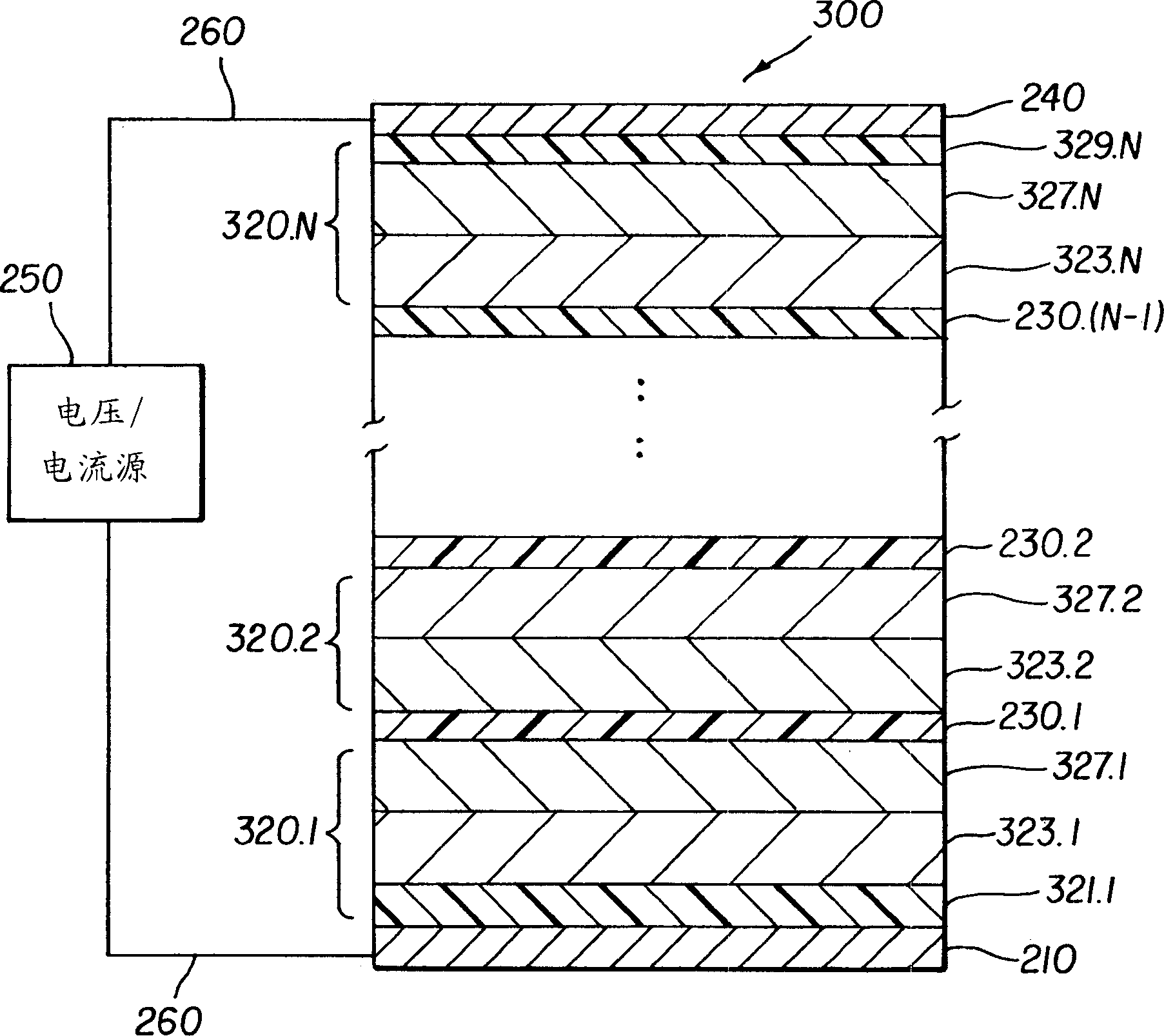Organic electroluminescent device of electroluminescent unit with lamina
A luminescent and organic field technology, applied in the field of organic electroluminescent devices, can solve the problems of not providing working examples, reducing the overall light output efficiency, and reducing luminous efficiency, and achieve the goal of improving luminous efficiency, increasing life, and increasing brightness Effect
- Summary
- Abstract
- Description
- Claims
- Application Information
AI Technical Summary
Problems solved by technology
Method used
Image
Examples
Embodiment 1
[0206] Example 1 (conventional OLED-comparison):
[0207] A conventional non-stacked OLED was prepared as follows: a 1 mm thick glass substrate coated with a transparent ITO conductive layer was cleaned and dried using an industrial glass washer tool. The thickness of ITO is about 42 nm and the sheet resistance of ITO is about 68 Ω / square. The ITO surface was then treated with an oxidizing plasma to render the surface suitable as an anode. By decomposing CHF in an RF plasma processing chamber 3 gas, a CFx layer with a thickness of 1 nm was deposited on the purified ITO surface as a HIL. The substrate is then transferred to a vacuum deposition chamber for deposition of all other layers on top of the substrate. at about 10 -6 Under Torr vacuum, the following layers were deposited by sublimation from a heated boat in the following order:
[0208] (1) HTL, 75nm thick, composed of NPB;
[0209] (2) ETL (also used as emission layer), 60nm thick, composed of Alq;
[0210] (3) ...
Embodiment 2
[0213] Embodiment 2 (comparison)
[0214] A stacked OLED was fabricated with layers in the following order:
[0215] (1) HTL, 50nm thick, composed of NPB;
[0216] (2) ETL (also used as emission layer), 50nm thick, composed of Alq;
[0217] (3) Thin metal electrodes, 1nm thick, composed of Mg:Ag;
[0218] (4) Another thin metal electrode, 1.5nm thick, composed of Ag;
[0219] (5) HTL, 50nm thick, composed of NPB;
[0220] (6) ETL (also used as emission layer), 50nm thick, composed of Alq;
[0221] (7) Cathode, about 210nm thick, composed of Mg:Ag.
[0222] The processing steps were the same as in Example 1 except for the deposition of the layers described above. The stacked device structure is denoted as ITO / CFx / NPB(50) / Alq(50) / Mg:Ag / Ag / NPB(50) / Alq(50) / Mg:Ag.
[0223] The stacked OLED requires a driving voltage of 21.2 V to pass 20mA / cm 2 . Its EL efficiency is 0.1cd / A. Its luminous efficiency-current characteristics, designated as Example 2, are shown in Image 6 ....
Embodiment 3
[0224] Embodiment 3 (comparison)
[0225] A stacked OLED was fabricated with layers in the following order:
[0226] (1) HTL, 75nm thick, composed of NPB;
[0227] (2) ETL (also used as emission layer), 60nm thick, composed of Alq;
[0228] (3) metal electrode, 10nm thick, made of Mg;
[0229] (4) HTL, 75nm thick, composed of NPB;
[0230] (5) ETL (also used as emission layer), 60nm thick, composed of Alq;
[0231] (6) Cathode, approximately 210nm thick, composed of Mg:Ag.
[0232] The processing steps were the same as in Example 1 except for the deposition of the layers described above. The stacked device structure is denoted as ITO / CFx / NPB(75) / Alq(60) / Mg / NPB(75) / AIq(60) / Mg:Ag.
[0233] The stacked OLED has a driving voltage of 11.2V and a current density of 20mA / cm 2 and EL efficiency of 1.3 cd / A. Its luminous efficiency-current characteristics, designated as Example 3, are shown in Image 6 .
PUM
 Login to View More
Login to View More Abstract
Description
Claims
Application Information
 Login to View More
Login to View More - R&D
- Intellectual Property
- Life Sciences
- Materials
- Tech Scout
- Unparalleled Data Quality
- Higher Quality Content
- 60% Fewer Hallucinations
Browse by: Latest US Patents, China's latest patents, Technical Efficacy Thesaurus, Application Domain, Technology Topic, Popular Technical Reports.
© 2025 PatSnap. All rights reserved.Legal|Privacy policy|Modern Slavery Act Transparency Statement|Sitemap|About US| Contact US: help@patsnap.com



